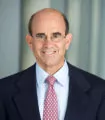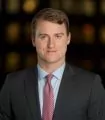On December 3, 2018, eight justices of the Supreme Court heard argument on whether a misstatement claim that does not meet the elements set forth in Janus Capital Group, Inc. v. First Derivative Traders, 564 US 135 (2011) can be repackaged and pursued as a fraudulent scheme claim. The Supreme Court's decision in this case, even if deadlocked 4-4, could have wide-ranging implications for the Securities and Exchange Commission's ability to enforce the federal securities laws and for claims by private plaintiffs.
As noted in our prior Advisory on the case, the DC Circuit previously concluded that Francis V. Lorenzo did not have "ultimate authority" and was not the "maker" of the statements at issue and therefore could not be held liable under Rule 10b-5(b) pursuant to Janus. The court concluded, however, that Lorenzo had "infringed Section 10(b), Rules 10b-5(a) and (c), and Section 17(a)(1), regardless of whether he was 'maker' of the false statements for purposes of Rule 10b-5(b)." Lorenzo v. Securities and Exchange Commission, 872 F.3d 578, 588-89 (DDC Cir. 2017). Supreme Court Justice Kavanaugh, sitting on the DC Circuit at the time, authored the dissent noting that pursuant to Janus, and under the rules adopted in numerous circuits,"scheme liability must be based on conduct that goes beyond a defendant's role in preparing mere misstatements or omissions made by others." Id. at 600. Justice Kavanaugh's recusal from the case was announced in October.
"Stuck" Between Primary and Secondary Liability
The issue before the Supreme Court is whether after Janus, Lorenzo can be charged with a primary violation of 10b-5(a) and (c), and Section 17(a)(1) despite not being the maker of the misstatements contained in the emails he forwarded to investors. The DC Circuit's conclusion that Lorenzo, director of investment banking at Charles Vista LLC, had sent the deceptive emails at issue with an intent to defraud was not challenged on appeal. The Court appeared to agree that Lorenzo's actions could form the basis of an aiding and abetting action by the SEC, but there did not appear to be consensus on whether it could give rise to an action for primary liability under Rule10b-5(a) or (c) or Section 17—the only charges brought by the SEC in the case.
The Janus Dissenters
Justices Breyer, Ginsburg, Sotomayor, and Kagan—who dissented in Janus—appeared skeptical of the argument that Rules 10b-5(a) and (c) should be limited to exclude conduct covered by Rule 10b-5(b). In addition, both Justice Sotomayor and Justice Kagan seemed to believe that Janus did not apply to Section 17 claims at all, as they only provide a governmental right of action.
Justice Breyer appeared troubled by the petitioner's conduct, noting,"it seems pretty bad" and that even if the petitioner "didn't make the statement, [] he was sure a big deal participant," suggesting that Justice Breyer may side with Justices Kagan and Sotomayor in upholding the decision.
Finally, Justice Ginsburg, who asked questions of both sides, pressed the SEC to address Petitioner's argument that its claims are "an end run about Janus" that, "would render Janus essentially inconsequential," as all the SEC would have to do "is repackage what would have been a 10b charge under 17 or 10b-5(a) and 10b-5(c)." It was difficult to ascertain whether the SEC provided Justice Ginsburg with adequate responses.
Justices Gorsuch and Roberts
Justices Gorsuch and Roberts appeared to side squarely with the petitioner on the issue, noting that fraud requires "an act that deceives someone else. And the only thing that deceived anybody allegedly here were these emails."
Justices Gorsuch and Roberts focused on the fact that the conduct at issue was simply the transmission of statements made by another and, as Justice Roberts noted, "if you read (a) and (c) the way [the SEC does], Janus is a dead letter." The SEC disagreed with that characterization, but had difficulty describing a scenario where Janus would bar claims under 10b-5(b), and the SEC could not repackage the claims under 10b-5(a) and 10b-5(c). Justice Gorsuch noted that the SEC's theory creates difficulty in "draw[ing] a line here between primary and secondary," and "that's where [he's] stuck." Justice Thomas, although, as is his practice, did not ask any questions, was the author of Janus, and is likely to side with the petitioner here in order to limit the possibility of an end-run around the Janus holding.
Implications
If Justice Ginsberg joins the Janus dissenters, there is likely to be a 4-4 split on the court. Such a split would increase uncertainty, as the mere transmission of misstatements in certain circuits, such as the DC Circuit, could still give rise to scheme liability but such claims could face challenge in other circuits and eventually this issue may find its way back to the Supreme Court.
In the event that the Supreme Court affirms the decision of the DC Circuit, the SEC may be able to pursue scheme liability claims based solely on conduct that consists of misstatements or omissions, and the bright line test that the Supreme Court attempted to establish in Janus could become nearly meaningless with respect to actions brought by the SEC. Additionally, private plaintiffs will likely seek to extend any decision by the Supreme Court here to private rights of action under 10b-5(a) and 10b-5(c).
The content of this article is intended to provide a general guide to the subject matter. Specialist advice should be sought about your specific circumstances.



